Each year thousands of hatchling turtles emerge from their nests along the southeast U.S. coast and enter the Atlantic Ocean. Sadly, only an estimated one in 1,000 to 10,000 will survive to adulthood. The natural obstacles faced by young and adult sea turtles are staggering, but it is the increasing threats caused by humans that are driving them to extinction. Today, all sea turtles found in U.S. waters are federally listed as endangered, except for the loggerhead which is listed as threatened.
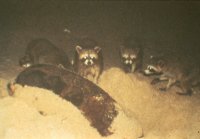
USFWS File Photo
In nature, sea turtles face a host of life and death obstacles to their survival. Predators such as raccoons, crabs and ants raid eggs and hatchlings still in the nest. Once they emerge, hatchlings make bite-sized meals for birds, crabs and a host of predators in the ocean. After reaching adulthood, sea turtles are relatively immune to predation, except for the occasional shark attack. These natural threats, however, are not the reasons sea turtle populations have plummeted toward extinction. To understand what really threatens sea turtle survival, we must look at the actions of humans.
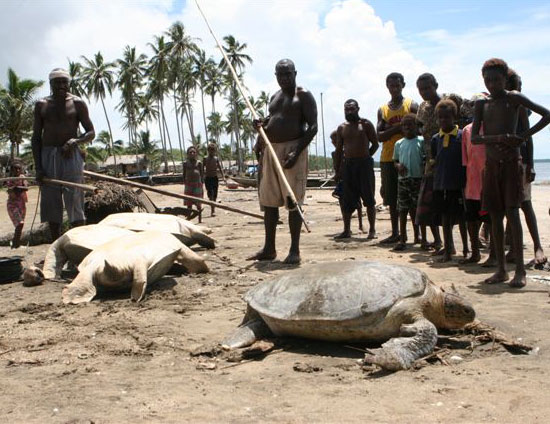
Photo by Rauli Virtanen
Although sea turtles have spiritual or mythological importance in many cultures around the world, this has not prevented humans from consuming their eggs or meat. In many coastal communities, especially in Central America and Asia, sea turtles have provided a source of food. During the nesting season, turtle hunters comb the beaches at night looking for nesting females. Often, they will wait until the female has deposited her eggs to kill her. Then, they take both the eggs and the meat. Additionally, people may use other parts of the turtle for products, including the oil, cartilage, skin and shell. Many countries forbid the taking of eggs, but enforcement is lax, illagal harvest is rampant, and the eggs can often be found for sale in local markets. Learn more…
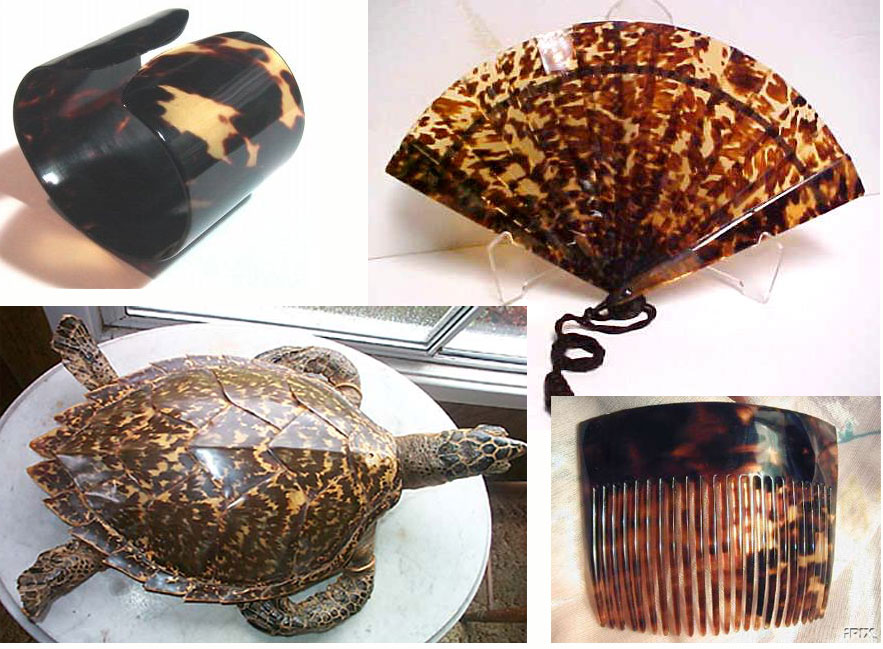
Sea Turtle Conservancy File Photo
Hawksbill sea turtles, recognized for their beautiful gold and brown shells, have been hunted for centuries to create jewelry and other luxury items. As a result, these turtles are now listed as critically endangered. Scientists estimate that hawksbill populations have declined by 90 percent during the past 100 years. While illegal trade is the primary cause of this decline, the demand for shells continues today on the black market. The lack of information about sea turtles leads many tourists to unwittingly support the international trade in these endangered species. Buying, selling or importing any sea any sea turtle products in the U.S., as in many countries around the world, is strictly prohibited by law. Learn more…
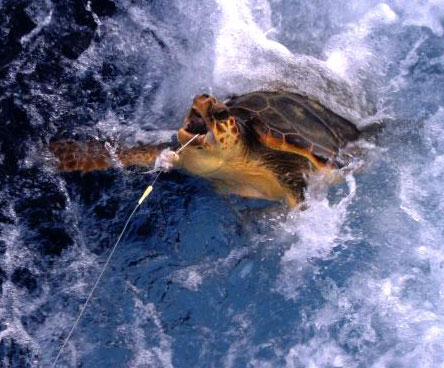
Photo by Salvador García-Barcelona
Each year hundreds of thousands of adult and immature sea turtles are accidentally captured in fisheries ranging from highly mechanized operations to small-scale fishermen around the world. Global estimates of annual capture, injury and mortality are staggering – 150,000 turtles of all species killed in shrimp trawls, more than 200,000 loggerheads and 50,000 leatherbacks captured, injured or killed by longlines, and large numbers of all species drowned in gill nets. The extent of gill net mortality is unknown, but sea turtle capture is significant where studied, and the drowning of sea turtles in gill nets may be comparable to trawl and longline mortality. Deaths in gill nets are particularly hard to quantify because these nets are set by uncounted numbers of local fishermen in tropical waters around the world. Other fisheries that accidentally take turtles include dredges, trawls, pound nets, pot fisheries, and hand lines. Learn more about longline fisheries…

Loggerhead escaping through a TED. NOAA file photo
In the United States, the federal government worked with the commercial shrimp trawl industry to develop Turtle Excluder Devices (TEDs). TEDs are a grid of bars with an opening either at the top or the bottom of the trawl net. The grid is fitted into the neck of a shrimp trawl. Small animals such as shrimp pass through the bars and are caught in the bag end of the trawl. When larger animals, such as marine turtles and sharks are captured in the trawl they strike the grid bars and are ejected through the opening. Today, all U.S. shrimpers are required to put TEDs in their trawl nets. Unfortunately, not all fishermen comply with the law, and sea turtles continue to drown in shrimp nets. Learn more about trawl fisheries…

Hatchling in plastic – Ralph Pace
Over 1 million marine animals (including mammals, fish, sharks, turtles, and birds) are killed each year due to plastic debris in the ocean. More than 80% of this plastic comes from land. It washes out from our beaches and streets. It travels through storm drains into streams and rivers. It flies away from landfills into our seas. As a result, thousands of sea turtles accidentally swallow these plastics, mistaking them for food. Leatherbacks especially, cannot distinguish between floating jellyfish – a main component of their diet – and floating plastic bags. Most of the debris is recognizable: plastic bags, balloons, bottles, degraded buoys, plastic packaging, and food wrappers. Some plastics aren’t so easy to see, so small, in fact, that it is invisible to the naked eye. If sea turtles ingest these particles, they can become sick or even starve. Turtles are affected to an unknown, but potentially significant degree, by entanglement in persistent marine debris, including discarded or lost fishing gear including steel and monofilament line, synthetic and natural rope, plastic onion sacks and discarded plastic netting materials. Monofilament line appears to be the principal source of entanglement for sea turtles in US waters. Learn more…
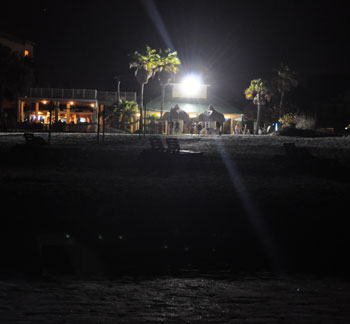
Sea Turtle Conservancy File Photo
Nesting turtles depend on dark, quite beaches to reproduce successfully. Today, these turtles are endangered, in part, because they must compete with tourists, businesses and coastal residents to use the beach. This man-made, coastal development results in artificial lighting on the beach that discourages female sea turtles from nesting. Instead, turtles will choose a less-than-optimal nesting spot, which affects the chances of producing a successful nest. Also, near-shore lighting can cause sea turtle hatchlings to become disoriented when they are born. Instead, they will wander inland where they often die of dehydration, predation, or even from being run over on busy coastal streets. Learn more…
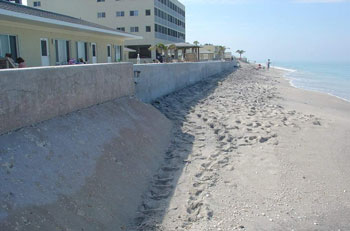
Loggerhead sea turtle tracks along sea wall. Photo by Wilma Katz
Sea turtle nesting beaches everywhere have been substantially altered by urbanization and development. To protect this prime real estate, many coastal property owners have built coastal armoring structures such as sea walls, rock revetments and sandbags to help protect their property from natural erosion. These man-made structures threaten sea turtles nesting habitat by interrupt the natural nesting process through a reduction of nesting habitat and displacement of turtles to less optimal nesting areas. Florida’s beaches, for example, host approximately 90% of all the sea turtle nesting in the U.S. But sadly, over 40% of Florida’s beaches are classified as critically eroding due to changes in the natural landscape of these beaches. Learn more…
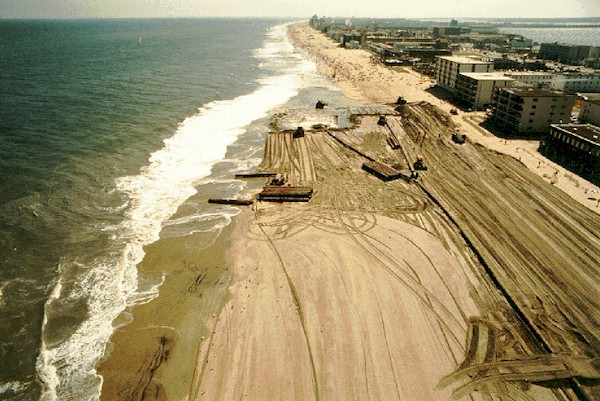 One way to address beach erosion is through beach nourishment. This consists of pumping, trucking or otherwise depositing sand on a beach to replace what has been lost to erosion. While beach nourishment is often preferable to armoring, if it is not done correctly, it can negatively impact sea turtles. Dredging for the sand to nourish a beach can cause direct threats to sea turtles and their nearshore marine habitats. Hopper dredges have been directly responsible for the incidental capture and death of hundreds, if not thousands, of sea turtles in the US. Learn more…
One way to address beach erosion is through beach nourishment. This consists of pumping, trucking or otherwise depositing sand on a beach to replace what has been lost to erosion. While beach nourishment is often preferable to armoring, if it is not done correctly, it can negatively impact sea turtles. Dredging for the sand to nourish a beach can cause direct threats to sea turtles and their nearshore marine habitats. Hopper dredges have been directly responsible for the incidental capture and death of hundreds, if not thousands, of sea turtles in the US. Learn more…
Human use of nesting beaches can result in negative impacts to nesting turtles, incubating egg clutches and hatchlings. The most serious threat caused by increased human presence on the beach is the disturbance to nesting females. Night-time human activity can prevent sea turtles from emerging on the beach or even cause females to stop nesting and return to the ocean.
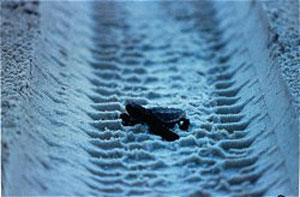
USFWS File Photo
Beach Furniture and other recreational equipment (e.g., cabanas, umbrellas, hobie cats, canoes, small boats and beach cycles) can reduce nesting success and increase false crawls on nesting beaches. There is also increasing documentation of nesting females becoming entrapped in beach furniture.
Beach Driving, either at night or during the daytime, can negatively impact sea turtles. Night time driving can disturb nesting females, disorient emerging hatchlings, and crush hatchlings attempting to reach the ocean. Tire ruts left by vehicles can extend the time it takes a hatchling to reach the ocean and increase their chance of being caught by a predator. Driving during the day can cause sand compaction above nests resulting in lower nest success. Additionally, beach driving contributes to erosion, especially during high tides or on narrow beaches. Learn more…
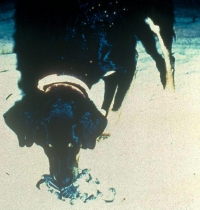 Around the globe, sea turtles and hatchlings alike are victim to natural predators. Crabs, raccoons, boars, birds, fish and sharks all play their role in the natural food chain. However, urban development along coast lines has introduced many non-native species that have become invasive predators for sea turtles and other coastal wildlife. Florida itself has one of the most severe invasive species problems in the United States. Domesticated dogs and cats will devour eggs and hatchlings and even attack nesting turtles. In many areas, trash left behind by humans encourages inland animals to migrate to beaches for food, further increasing sea turtle predators. Learn more…
Around the globe, sea turtles and hatchlings alike are victim to natural predators. Crabs, raccoons, boars, birds, fish and sharks all play their role in the natural food chain. However, urban development along coast lines has introduced many non-native species that have become invasive predators for sea turtles and other coastal wildlife. Florida itself has one of the most severe invasive species problems in the United States. Domesticated dogs and cats will devour eggs and hatchlings and even attack nesting turtles. In many areas, trash left behind by humans encourages inland animals to migrate to beaches for food, further increasing sea turtle predators. Learn more…
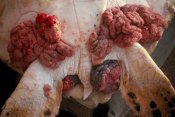
Photo Courtesy of Dean Bagley, UCF
Marine pollution can have serious impacts on both sea turtles and the food they eat. New research suggests that a disease now killing many sea turtles (fibropapillomas) may be linked to pollution in the oceans and in near-shore waters. When pollution enters the water, it contaminates and kills aquatic plant and animal life that is often food for sea turtles. Oil spills, urban runoff from chemicals, fertilizers and petroleum all contribute to water pollution. Because the ocean is so large, many incorrectly assume that pollutants will be diluted and dispersed to safe levels, but in reality, the toxins released from these pollutants become more concentrated as they break down in size. As a result, these smaller, more toxic particles become food for many links in the food chain, including sea turtles. Learn more…
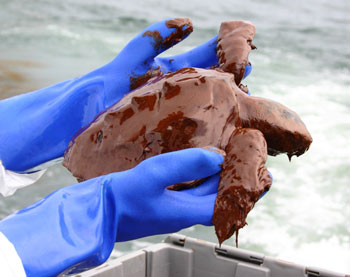 Marine pollution can have serious impacts on both sea turtles and the food they eat. New research suggests that a disease now killing many sea turtles (fibropapillomas) may be linked to pollution in the oceans and in near-shore waters. When pollution enters the water, it contaminates and kills aquatic plant and animal life that is often food for sea turtles. Oil spills, urban runoff from chemicals, fertilizers and petroleum all contribute to water pollution. Because the ocean is so large, many incorrectly assume that pollutants will be diluted and dispersed to safe levels, but in reality, the toxins released from these pollutants become more concentrated as they break down in size. As a result, these smaller, more toxic particles become food for many links in the food chain, including sea turtles. Learn more…
Marine pollution can have serious impacts on both sea turtles and the food they eat. New research suggests that a disease now killing many sea turtles (fibropapillomas) may be linked to pollution in the oceans and in near-shore waters. When pollution enters the water, it contaminates and kills aquatic plant and animal life that is often food for sea turtles. Oil spills, urban runoff from chemicals, fertilizers and petroleum all contribute to water pollution. Because the ocean is so large, many incorrectly assume that pollutants will be diluted and dispersed to safe levels, but in reality, the toxins released from these pollutants become more concentrated as they break down in size. As a result, these smaller, more toxic particles become food for many links in the food chain, including sea turtles. Learn more…
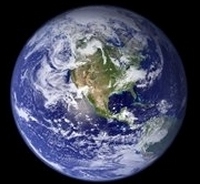
NASA File Photo
Because sea turtles use both marine and terrestrial habits during their life cycles, the affects of climate change are likely to have a devastating impact on these endangered species. Climate change affects nesting beaches. With melting polar ice caps and rising sea levels, beaches are starting to disappear. As the water level begins to rise, the size of nesting beaches decrease. Stronger storms, predicted as a result of increasing temperatures, will continue to erode coastal habitats. Higher temperatures can adversely affect sea turtle gender ratio. Increasing incubation temperatures could result in more female sea turtles, which reduces reproductive opportunities and decreases genetic diversity. Learn more…
Although these threats to sea turtles and destruction of their habitats seem almost too big to overcome, there are many things within our control that can be changed. Greater public awareness and support for sea turtle conservation is the first priority. By learning more about sea turtles and the threats they face, you can help by alerting decision-makers when various issues need to be addressed.